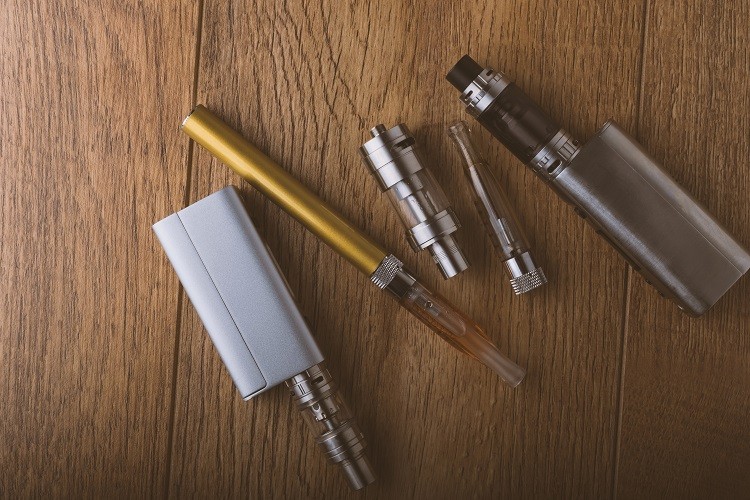Vape
How Safe is Your Vape? – The Science behind Vaping and Its Ingredients
The rise in the use of electronic cigarettes in recent years has been greeted with a mixed reaction in various quarters. At the outset, they were seen as something of a temporary fad, a gadget, and likely viewed by the all-powerful titans of the cigarette industry as something that would fade as quickly as the last hazy cloud of cigarette smoke-induced by your favorite household brand name.
This has certainly not been, and now, as more and more take up the “hobby” of vaping, research continues into the possible impact of e-cigarette use and specifically the long-term effects of some of the more potent chemical ingredients besides nicotine. Here we will examine the issue in more depth and try to understand both the positive and negative surrounding this relatively new industry.
The Surge in Popularity of Vaping
The earliest form of e-cigarette was conceptualized in 1963 with a patent granted in 1965. The efforts of Herbert Gilbert did not come to fruition, however, thanks in the most part to the popularity of smoking. It was not until 2004 that the first e-cigarette as we now know them was released onto the Chinese domestic market, slowly trickling to the rest of the world.
Although difficult to pinpoint when this trickle of popularity became a flood, there are now more than 40 million vapers, and an industry worth more than $20 billion globally. This flood of wealth has of course attracted the once skeptical giants of the smoking industry to become involved. The like of British American Tobacco, among others, is now a strong force within the sector.
With this popularity comes scrutiny. That entails scrutiny from governing bodies and health organizations, although in many cases this produces paradoxical results. Even e-cigarette smoking contains a certain amount of nicotine and other potentially harmful chemicals. These chemicals include the solvents used within the electronic devices, such as propylene glycol. This is the main chemical in many vapes, and coming closely under the microscope after much recent research pointed to potentially harmful effects, and reactions.
Such research has also been balanced by positive publicity from other high authority sources, such as a recent endorsement by Public Health England for e-cigarettes to be made available on prescription to assist those quitting smoking, and a political group report, also in the UK, which called for vaping in public places and on transport to be allowed.
The Positive Impact
As mentioned, aside from the negative press, the rise of vaping has seen many positive impacts around the world. Millions of smokers have attested to the helpful role which e-cigarettes have played in their decision and perseverance to quit smoking, and there is little doubt that it is certainly much less harmful to vape than a puff on traditional cigarettes. Research has shown the reduction in harm to be as much as 95%.
This is a natural benefit with a knock-on impact on the use of health services among other social factors too. Besides the debate about the possible harmful effects of vaping in public spaces thanks to secondhand smoke, nobody can disagree that it is proportionately less harmful than smoking cigarettes both first and second hand. Thanks in a large part to the legalization of cannabis in many global locations, there has also been a corresponding rise in demand for vaping related oils and items including CBD vape oils. This can only contribute in a positive way given the many uses of CBD oils.
The Chemicals in Your e-Cigarette
Many of the issues which have concerned vapers and wider society center on the chemicals within your vape. This means, not only nicotine, which is still present in many vapes, levels much decided by the vaper themselves. This, whilst we have already outlined is concerning, though at least the negative impact is vastly reduced on smoking. Where the real source of worry comes from is other chemicals used in your vape liquids. This predominantly refers to propylene glycol, a solvent used in the mixing of your favorite vape juices. Until now, this has not been an issue, however recent research has unearthed some worrying information.
Propylene glycol is the dominant chemical inside your e-cigarette, and new research suggests this is the chemical which could be having a detrimental impact on your health when vaping. Although little is still known about the exact effects which this chemical has on the human body, it is quite clear that particularly with some flavors, the chemical has a reaction with other chemicals in the vape to create other chemical and compounds which could result in harm.
That said, the FDA has already approved these flavors and juices for consumption, although with thousands of flavors on the current market, the general consensus is that more research should be done to establish the real impact of vaping on users and those around them. More detailed research recently carried out demonstrated the buildup of three mutation-inducing chemicals: formaldehyde, acrolein, and methylglyoxal. These chemicals present the worrying possibility of cancers, although it is vital not to read too much into this information since there exist a variety of conflicting reports, coupled with the fact that almost everything we do in life has been discovered to promote the growth of cancer cells and carcinogenic chemicals.
Natural vs Nicotine
When it comes to vaping in a more healthy fashion, ideally the first ingredient you will try to remove would be nicotine. In fact, why not replace it with some terpene infused CBD vape oil. This will help completely cut dependence on nicotine out of your life, leaving you to enjoy a vaping experience of a much higher quality overall.
Following on from this, there is also a wide, and ever-expanding range of organic vape juices being made available from many producers. These purport to be healthier in many ways, and with fewer chemicals and other harmful additives including diacetyl-free. In fact, this list goes on, from vegan, to non-genetically modified, to the vape juice had its own hot tub. Basically, whichever positive aspect of life you wish to embrace, there is a natural vape liquid available to satisfy you. Of course, we do not know how much truth is in many of these statements, but we presume they could be no more harmful than the original.
A final factor to weigh-in on the debate about the health of your e-cigarette is the nicotine content. The typical cigarette would contain around 12mg of nicotine at regular strength. Vaping, however, can be utterly flexible depending upon the user. Typical vape juices can contain between 0-12mg of nicotine if bought directly from the shelf. The fact remains though that vaping is seen as more than just a passive activity. Developing your own vape juices and modifying the equipment has taken on a life of its own, sparking growth in a huge subculture. This approach of passion and flexibility can mean that, besides the risk of fire from your modified vape, juices can also contain as much as 36mg of nicotine. This is a point where the question should really be asked if one is benefiting more from vaping than smoking in terms of general health.
The Long-Term Outlook for Vaping
Whilst the financials look extraordinarily strong, and the vaping industry is set to go from strength to strength in terms of this growth, real questions will soon have to be examined about the long-term health impact. Although everything is up for speculation, with the exception of the UK who are surprisingly trying to promote a more liberal approach, other nations are continuing to impose new restrictions on e-cigarettes with many now subjecting them to similar public use regulations as traditional smoking.
As more research continues to be carried out within this young, burgeoning industry, it seems certain that whilst the future will likely continue to burn brightly, it may do so with more legislation in place, and a more cautious public attitude to vaping, particularly in public. With that said, there are many positives which will continue to emerge in the long-term for the industry. This should include the increased availability of organic vape juices and the continued growth of CBD based vapes helping users to benefit in a number of ways to positively promote their health.
Conclusion
It is clear to note that whilst the vaping industry as a whole is in a moment of huge global growth, paradoxically, the concern is beginning to surface through increased research which could have a negative impact on the market.
As it currently stands, though nobody could deny the need for further research, vaping still represents a very effective way to quit smoking, and markedly less harmful method of enjoying a construable level of nicotine if you so choose, without having quite so much negative impact on the surrounding society.


